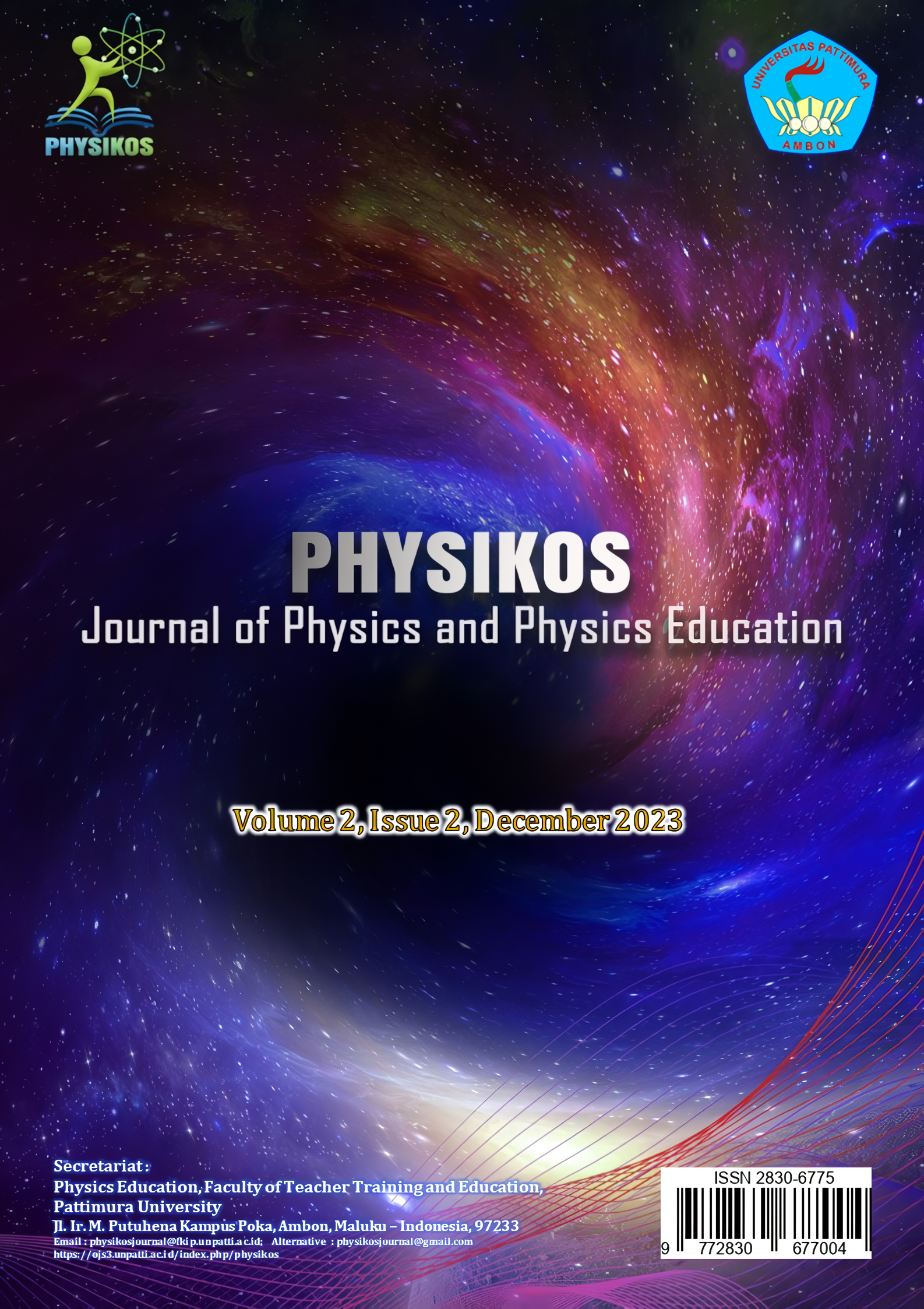Penerapan Model Pembelajaran Problem Solving Untuk Meningkatkan Penguasaan Materi Kalor Dan Perpindahan Pada Peserta Didik Kelas VII SMP 6 Inamosol Kabupaten Seram Bagian Barat
Abstract
This study aims to determine how applying problem-solving-based learning models improves the understanding of mastery of heat and its transfer material in 7th-grade students of SMP 6 Inamosol, West Seram Regency. This type of research is quantitative descriptive research with a one-group pretest-posttest design. This research data was analyzed based on acquiring initial and final test scores and increasing mastery of material using the average normalized gain. The data analysis showed that all students' initial material mastery ability was in the failed qualification (100%), with an average score of 21,19. This situation shows the low ability of students' initial knowledge of heat and transfer material. After applying the problem-solving learning model, students obtained an average final test score of 85.08 with good qualifications. The average value of the N-Gain test results obtained 0,82 is in high qualification. Thus, applying the problem-solving learning model can improve the knowledge of 7th-grade students of SMP Negeri 6 Inamosol, West Seram Regency, on the material of heat and its transfer.
Downloads
Copyright (c) 2023 Fanli Wiratraur, Estevanus Kristian Huliselan, Ketarina Esomar

This work is licensed under a Creative Commons Attribution 4.0 International License.





